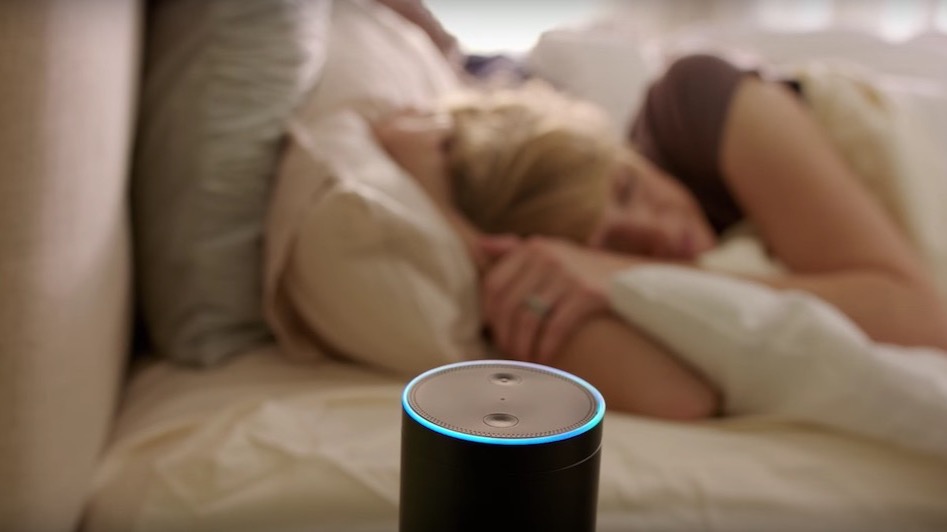
The term “AI” (artificial intelligence) is being bounded about via all forms of media, but do many actually understand how AI is becoming part of the consumer electronics landscape in and amongst some of our most normal and everyday products, almost making smart technology old hat by comparison? The reality is that in order for AI to function, you need smart devices that enable you to join the dots (metaphorically) and make an AI solution work for you in your environment.
Probably the most recognised mainstream AI product to come to market is the Amazon Echo, which is expected to sell 3 million units in 2016 with forecasted sales in 2017 of 10 million units. You’ll know the product: it’s that black cylinder with a blue pulsating light on its rim promoted through those awful adverts where some chap asks Alexa to add tennis balls and dog biscuits to his shopping list.
In essence, Amazon Echo and its sibling Dot, which has no speaker but effectively does the same thing, are intended to be your assistant, connect all of your smart devices, and enable you to voice control your heating, lights, online orders, music streaming, etc. and also your on demand services like Uber. It’s impressive stuff, but you have to always preface your requests with Alexa’s name which may make you feel somewhat daft, and not very British. After all, the only device I want to talk at is my phone as part of a conversation with a human being. I’m sure that I’ll adapt to AI over time, whereas the generations younger than me and those of the future will think this the norm — thereby making AI a sure fire success and as commonplace in the home as a TV or at least a tablet.
Whilst Amazon’s product is reasonably priced, customer feedback shows that 87% of users are satisfied with the device, 85% use Echo to set alarms, 82% to play music, and two thirds ask for news updates. Overall, 39% of Echo users plan to increase their usage as support grows for the platform, which will be intrinsically linked to bolstering Amazon’s revenues.
However, this remains unlikely when you consider what’s coming next: Google Home. The future of AI in the home is way more than just a “smart speaker” as the category is being tagged. This innovation outclasses all other mainstream AI devices when you consider its compatibility across all Google platforms, including YouTube, Google Maps, and third-party streaming services such as Netflix and OpenTable across all OS devices, but complemented by all MadebyGoogle devices from Pixel to Chromecast.
With the imminent launch of the Google Home AI assistant, the game changes as the “smart speaker” category is taken to the next level and the benchmark is set at a point that many will struggle to follow.
AI is not a gimmick. It will intrinsically evolve with your devices, appliances, streaming platforms, and all forms of entertainment like virtual reality (VR). In fact, VR is the next big thing estimated to become a $2 billion category by 2020 that many in the advertising and media buying business can’t afford to ignore.
With an estimated $400 million being invested in 2016 on content development, VR has been established as a credible platform. This, in turn, leads to estimates like Sony PlayStation’s approximated 2.6 million units to be sold in 2016 alone.
What VR does assist with is declining PC sales, which mark a natural attrition device affected by users transitioning to tablets and, in some cases, phablets. With an 8% decline in global PC sales, it’s unlikely that VR will fill the gap; however, it will assist, in particular within the PC gaming category.
What both VR and AR will definitely change for many brands is their cognitive approach to advertising. With less time spent on traditional media, how can brands tap into these technologies without becoming annoying and disliked? Disruptive marketing — once considered so cool, but in reality unable to fool anyone — is not welcome in the augmented or artificial world where pleasure and convenience are the unique selling points evolving these innovations.
It’s believed that VR will be a $50 billion industry by 2021, with only 50% generated from gaming. Therefore, the rest is up for grabs with smartphone adoption accounting for 7% of the market, but interestingly achieving a higher volume due to the low cost of its related VR equipment. Those familiar with VR will know Cardboard (it’s been around, in tech years, for ages), but now we have the new entrant Google Daydream, a device which yet again changes the market with innovation, design, and distribution only challenged by the Samsung Gear, an Oculus product.
Whichever way you view it, both VR and AI are here to stay, with the new kids on the block definitely stealing the march. There was a time when many thought these innovations would come out of Infinite Loop, but instead it’s evolving from Mountain View and Terry Avenue. How the times are changing for consumers, brands, and advertisers!
